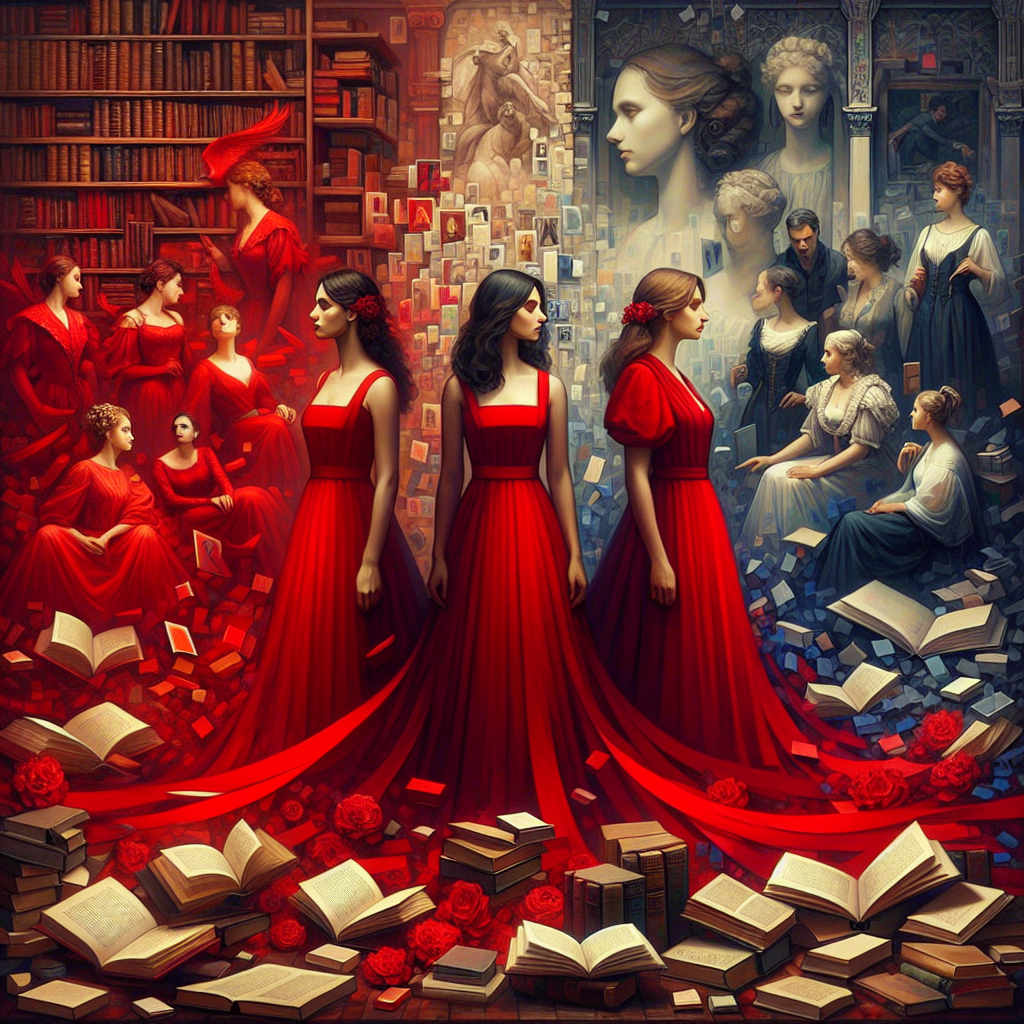The Symbolism of the Red Dress
Red dresses have long been a powerful symbol in art and literature, representing themes such as passion, love, rebellion, and femininity. In various cultures, the color red signifies strong emotions and can evoke a sense of urgency. Artists and writers have frequently used the imagery of girls in red dresses to explore complex themes related to identity, societal constraints, and personal liberation.
Historical Context
Throughout history, the red dress has held significant meaning across cultures. In Ancient Rome, red was associated with power and wealth, often worn by the elite. Similarly, in many Eastern cultures, a red dress signifies good fortune and celebration, particularly during weddings and festivals. The contrast of a girl in a red dress against more subdued colors can symbolize her breaking free from societal norms.
Artistic Representations
One of the most renowned compositions featuring a girl in a red dress is Gustav Klimt’s “The Bride.” Here, the vibrant red contrasts with the intricate patterns and muted backgrounds, drawing the viewer’s attention to the bride’s emotional complexity. Klimt’s use of gold leaf captures both the allure and weight of femininity.
Another notable example can be found in André Kertész’s photograph titled “Composition with Red Dress,” which captures the elegance and dynamism of a girl in motion. Kertész’s focus on the flowing fabric and its vibrant color encapsulates freedom and rebellion, allowing interpreters to delve into the emotional undertones of the subject’s journey.
Literary Explorations
In literature, the imagery of a red dress is frequently employed to convey deeper themes. In “The Handmaid’s Tale” by Margaret Atwood, the red dresses worn by the Handmaids symbolize their roles as both subservient and empowered beings, stripped of individuality yet marked by a striking color that represents fertility and blood. This duality in representing life and oppression invites readers to grapple with complex themes of gender and autonomy.
In “The Girl in the Red Dress,” a short story by Patience Agbabi, the protagonist’s red dress embodies her struggle for self-identity amidst societal judgments. As she navigates her journey through challenging relationships and external expectations, the red dress serves as a metaphor for her vibrant spirit and defiance.
Modern Interpretations
Contemporary artists and writers continue to draw inspiration from the motif of girls in red dresses. In film, an iconic scene featuring a girl in a red dress can be found in “Schindler’s List,” where the dress stands out starkly against the black-and-white background, symbolizing innocence amidst tragedy. This use of color elevates the character’s significance, showcasing the weight of loss and the impact of violence.
Contemporary literature such as “Red Queen” by Victoria Aveyard plays with the symbolism of the red dress in the context of power dynamics. The protagonist’s journey through a world divided by class and bloodlines is accentuated by the recurring motif of the red dress, representing both her struggle and ambition in a society rigged against her.
Fashion and Cultural Impact
The cultural significance of the red dress extends beyond traditional art and literature. In fashion, the red dress has become an emblem of empowerment and self-expression. Iconic events, such as the Met Gala, often see celebrities donning stunning red gowns that not only make statements but also honor the historical context tied to the color. Designers like Valentino and Dior have made the red dress a staple, often incorporating it into collections that celebrate femininity and power.
Psychological Perspectives
From a psychological standpoint, the color red can invoke a range of responses, from passion to anxiety. The portrayal of girls in red dresses taps into the collective consciousness, evoking imagery that prompts reflection on personal and cultural narratives. Psychologists often consider red as a color of action, inciting movement and encouraging individuals to take bold steps in their lives.
Impact on Society
As discussions surrounding gender and representation in art and literature evolve, the imagery of girls in red dresses continues to provoke thought. It challenges viewers and readers to consider how societal expectations shape identity and how color symbolism can encapsulate broader narratives. Engaging with this motif enables an exploration of personal, cultural, and political dimensions.
Conclusion
The motif of girls in red dresses journeys through a rich tapestry of art and literature, revealing layers of meaning that resonate across different cultures and eras. In capturing the essence of passion, rebellion, and complexity, red dresses serve as a versatile symbol. They invite us not just to admire their beauty but to engage with the powerful themes they convey. Through their vibrant hue, they challenge norms and inspire conversations about identity, empowerment, and the human experience.



